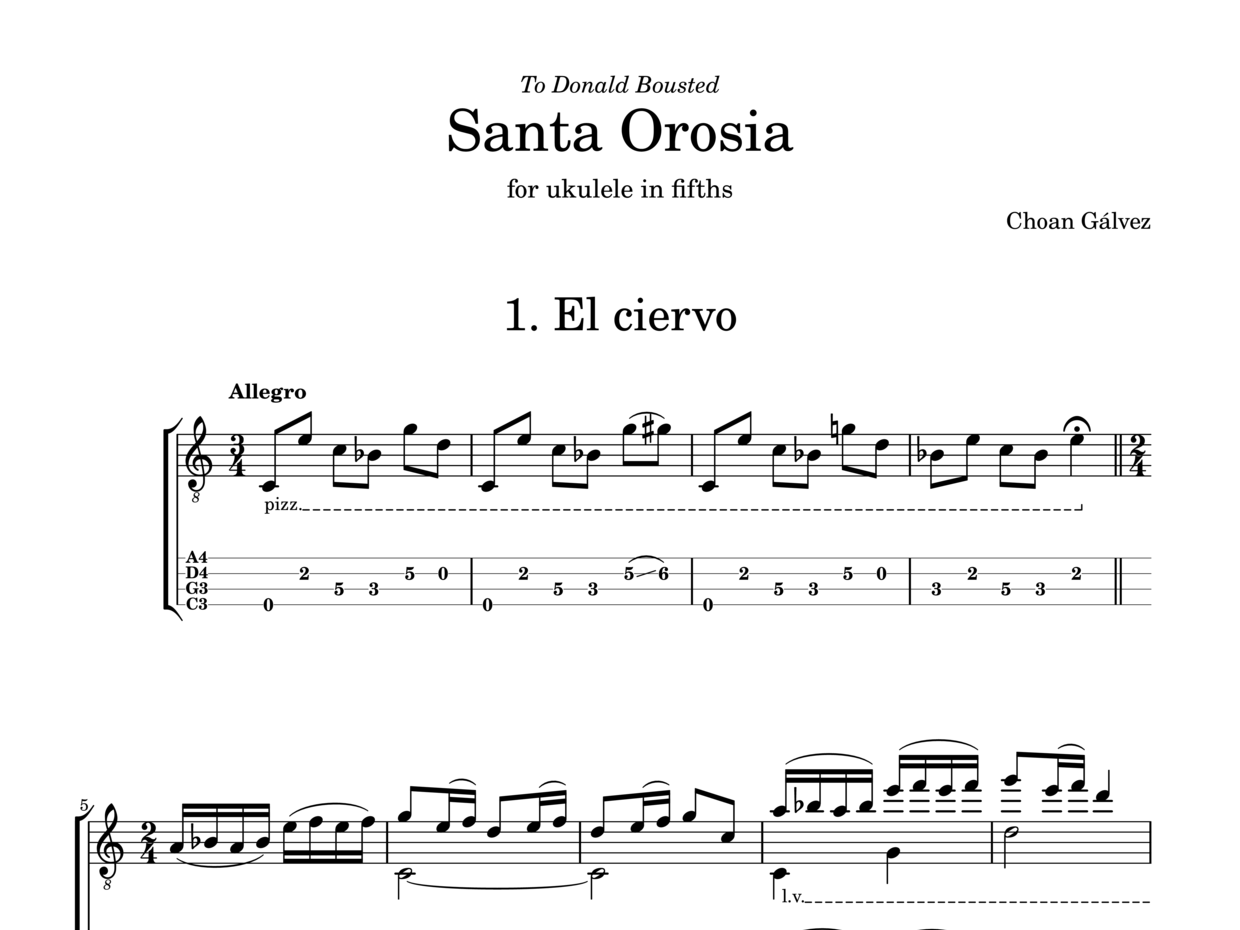Santa Orosia
A suite inspired by traditional music from Yebra de Basa, Spain
Published on December 1, 2021
I’m happy to introduce this project, a suite of pieces for ukulele (fitfhs tuned ukulele, in fact) inspired by traditional melodies from Yebra de Basa, Spain.
In Autumn 2020, Donald Bousted talked to me about his new instrument, a baritone ukulele “about the size of a small elephant” that he had tuned in fifths, and told me he was after a new repertoire for it. As a fan of his performances and grateful for how he had treated other works of mine that he had gently premiered, I immediately started working on something.
Remembering some beautiful traditional tunes that I learnt many years ago from the Ixo Rai covers, I wrote (or reimagined) this El coplé, inspired by one of the mudanzas del dance from Yebra de Basa.
Fascinated by Bousted’s rendition, I thought I could build a beautiful project based on this first stone. As a result, I wrote a suite of seventeen brief pieces that I’ve titled Santa Orosia. I’m fortunate that Bousted—one of my particular heroes—has fostered this suite and included a premiere recording in his album Barry Tone‘s Fantastic Adventure.
I strongly recommend listening to this full album (along other Donald Bousted’s recordings devoted to the ukulele and his own opuses for other instruments). But, let’s talk about Santa Orosia!
The dance
In Aragón (Spain) the dance is a popular event that combines music, dance and theatrical elements. The one from Yebra de Basa is celebrated on June 25th, on the feast of Saint Eurosia. Eight men, properly dressed for the occasion, perform a variety of stick dances to the music provided by a single musician, playing chiflo and salterio. The chiflo is a three hole flute, tuned in mixolydian mode; the salterio is a string instrument tuned to the root and fifth of the mode that provides a rhythmic drone when hit with a stick. One may identify this percussive drone with the tambora technique employed in some of these re-creations.
In this documentary 1974 documentary, Faustino Villacampa shows the salterio (minute 12'20" and his father, Alfonso, tells how he became the gaitero in the dance and talks about the chiflo and its snake skin. From 17'50" we can listen to both instruments and watch the dancers in action.
Listen to Santa Orosia
You can listen to the full suite in this album by Donald Bousted available from Bandcamp where you can also acquire a digital copy. If you’d like to buy a CD, I still have some CD copies around, feel free to contact me.
The Why—and the sources
How’s Choan related to Yebra? In no way, actually. By the 1990’s I was a follower of the aforementioned Ixo Rai, a band from my hometown (Zaragoza). They included in their first album Yebra folk África, a track where they put African rhythms to some of the melodies from the dance.
I doodled for years with these melodies on various instruments, but it wasn’t until I got Donald Bousted’s request for new works for fifths tuned ukulele that I decided to use them as a basis for new compositions. I’ve kept some of the melodies close to the originals, others I’ve transformed radically in rhythm and melody. In all cases I’ve created harmonies and counterpoints. With love and humour.
I’ve taken as sources some recordings from the seventies that appeared in Raíces, some more contemporary recordings available from Sipca, and especially, the field recordings collected by Alan Lomax at Alfonso Villacampa’s home in 1952. I’m thankful to my chirmán Diago Lezaun for his collaboration on this project. He aported his vast knowledge of the subject, transcriptions of the music and translated to Aragonese part of the text included in the score edition.
The score
Santa Orosia’s score has been published by The Ukulele Bookshop, and is available both in digital and print.
